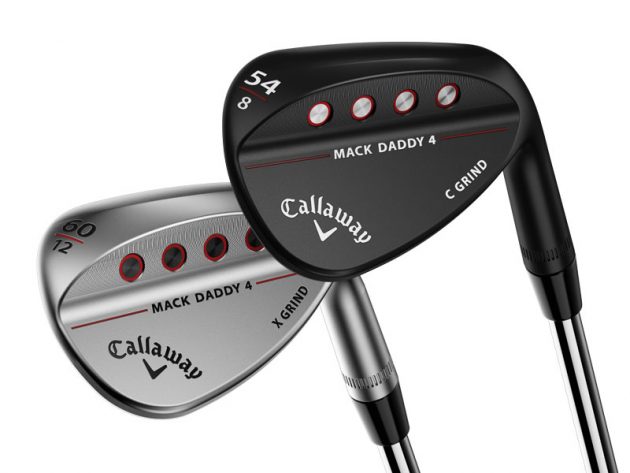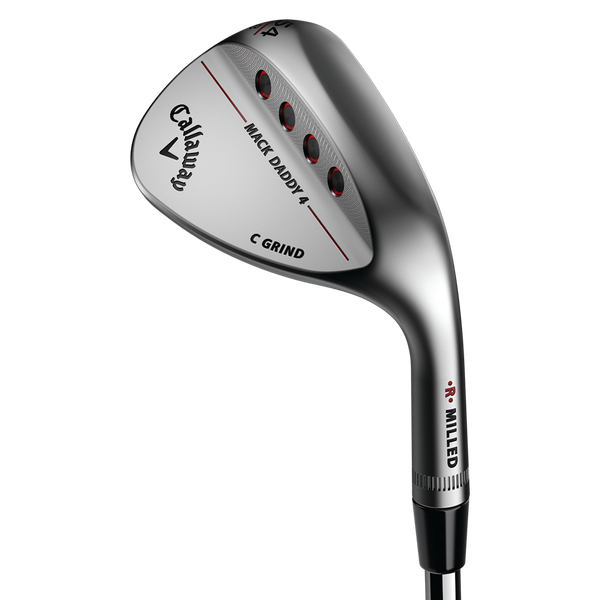Callaway Mack Daddy 4 Wedge Unveiled
view all articlesCallaway have unveiled their new Mack Daddy 4 Wedge. The new model offers even more bounce and grind options, in addition to raised ridges between the grooves for added spin. Many of you may have seen some of the tour Pro’s using prototypes of Callaway Wedges over the last few months, and we can now confirm it was the Callaway Mack Daddy 4.
Mack Daddy 4 Technology & Design
The design was heavily influence by Roger Cleveland as well as feedback from tour players. The main new technology is the groove-in-groove which will allow for more green-side spin. In fact, several features combine to provide more shot-stopping control. The main grooves for example, are saw-cut and horizontally milled to more precise tolerances. There’s also now an extra “Nip-It” groove near the leading edge that enhances spin on short and/or slightly thin shots. Finally, increased surface roughness on the flat parts of the face sees three raised micro-ridges extend the length of the hitting area. Between these ridges are micro-grooves that help grab the ball’s cover to increase spin significantly on a variety of shots. It is this combination of grooves and micro-grooves that provides 84 different contact points to grab the cover of the ball at impact, instead of the just the traditional 16 grooves.
What is groove-in-groove technology?
Click on the picture below to reveal all.
Why buy a Callaway Mack Daddy 4 Set of Wedges?
-
More Spin from Groove-In-Groove Technology
-
Broad range of lofts and bounce combinations
-
Four sole angles to suit a variety of playing styles, attack angles and course conditions
-
Satisfying feel from soft carbon steel, precise CG Locations and Crisp Turf Interaction
-
Tour-Inspired shaping
-
Choice of platinum chrome or black matte finish
Callaway Mack Daddy 4 Wedge Specifications
The Callaway Mack Daddy 4 wedge will come fitted with a Dynamic Gold Tour Issue 115 shaft and premium Lamkin UTX grip as standard and go on sale from January 26th. It will have an RRP of £139 in satin chrome and matte-black finishes, and come in lofts 46°, 48°, 50°, 52°, 54°, 56°, 58° and 60°.
In addition, there’s a new X Grind, which now means there’s a total of four grinds. It features 12˚ of bounce, a narrow high-bounce crescent sole, with the low point near the front – ideal for moderate-to-steep attack angles and medium-to-soft course conditions.



